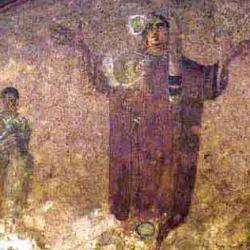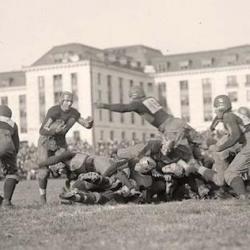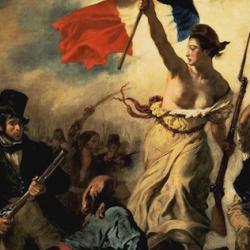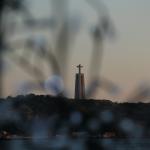Philip Caldwell’s Liturgy As Revelation is a successful book on several levels. Caldwell fills out recent accounts of twentieth-century Catholicism by attending to some lesser-known figures associated in various ways with the nouvelle theologie: Rene Latourelle, Salvatore Marsili, Gustave Martelet, and, a later figure, Avery Dulles. Caldwell’s analyses of these writers is anything but superficial: He covers their lives and major contributions, in considerable detail.
These writers were to liturgical theology what the “new theologians” were to Thomism and neo-scholasticism: “just as la nouvelle théologie, fortified by the credible stature that a Christology of biblical and historical proportions had generated, attempted to rescue Catholic theology from the stale inertia of the scholastic manualists, the similarly strengthened liturgical movement tried to retrieve Christian worship from the grasp of ritualists and canon lawyers.”
As a theological treatise, Caldwell’s book shows both the scope and the integrity of that movement – its deep interweaving of typological exegesis and liturgical sensibilities, its anthropological and cultural interests inherent in the new theology, its rootedness in the Catholic tradition that produced the fruit of reform and fresh theology, their effort to formulate “revisionary metaphysics” by attending to history and the Bible, the Christocentricity that guided everything.
At the heart of their symbolic worldivew was the Eucharistic liturgy: “The Eucharist was the archetype of the divine analogy whereby created things participated in the supernatural reality they signified. Poetry in turn was, in one way or another, modelled on sacramental or scriptural language. The words of the poem incarnated the things they named, just as the words of the Mass shared in the transformation they evoked. The symbols and metaphors of poetry were no mere inventions of the poets. They were borrowed from the divine analogies of nature. Poetry was meaningful in the same way as nature itself—by a communion of the verbal symbols with the reality they named.”
But their liturgical interests were the opposite of antiquarian and narrow. Martelet developed an entire anthropology revolving around the resurrection as expressed and exhibited in the Eucharistic celebration. As Martelet put it, “There are many ways of showing that the Resurrection of Christ is the centre of gravity of world history. The starting point of our demonstration here will be the Eucharist itself, for the Eucharist is one of the most paradoxical forms in which the Lord is actualised. If Christ is not risen, then the Eucharist is in vain, and its supper is a hollow void. No emphasis on the community can, by itself, fill the gap; nor can any rethinking of the symbols of faith. You find young persons who suddenly give up the Eucharist after being told, for example, that Christ’s walking on the waters is simply a myth. And they are quite right; for the truth is that if Christ is not he who in a real sense has mastery over the world and, in his resurrection, has conquered our death, then the Eucharist which depends upon him has no essential contribution to make. It is no more than the rite practised by a human group imprisoned to death, and it will disappear as that group disappears.”
The resurrected Christ does not lose contact with this world: He is still embodied, and so still “inserted” into our reality. Yet, by the resurrection He overcomes death and thus is not bound by the limits that bind us. The resurrected Christ and the Spirit who is the great “reverser” of death come to us in the Eucharist. In Martelet’s words, “what the Eucharist does is to actualize in signs the risen body of Christ, that is, of the Lord himself in his relationship, at once transfigured and transfiguring, with the world and with ourselves.”
For all of these theologians, Christianity is culturally and anthropologically potent precisely because it has a liturgical form, because we encounter the risen Christ in the concrete liturgical forms of the Eucharist.














